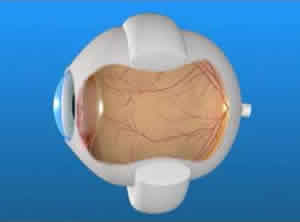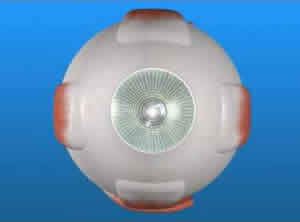More than 2.2 million Americans age 40 and older have open angle glaucoma. At least one half of all people with glaucoma don’t know they have it.
Between 89,000 and 120,000 people are blind from glaucoma. It is a leading cause of blindness, accounting for between nine and 12 percent of all cases of blindness. The rate of blindness from glaucoma is between 93 to 126 per 100,000 people over age 40.
Glaucoma is an eye disease that causes loss of sight by damaging a part of your eye called the optic nerve. There are several different types of glaucoma including primary open angle, angle-closure, secondary, congenital, and juvenile. The most common type of glaucoma is open angle glaucoma. Increased pressure inside the eye may play a role in glaucoma.
Types of Glaucoma
Angle-Closure Glaucoma
A type of glaucoma caused by a sudden and severe rise in eye pressure. Occurs when the pupil enlarges too much or too quickly, and the outer edge of the iris blocks the eye’s drainage canals. Can be either acute or chronic.Congenital Glaucoma
A rare form of glaucoma that occurs in babies and young children. This condition can be inherited. It is usually the result of incorrect or incomplete development of the eye’s drainage canals during the prenatal period.Primary Open Angle Glaucoma
The most common form of glaucoma in the western world. This form of glaucoma usually develops very slowly as the eye’s drainage canals gradually become clogged. There are no early warning signs for primary open angle glaucoma, which is why it is often called the “sneak thief of sight.” Also known as open angle glaucoma.Secondary Open Angle Glaucoma
A form of glaucoma that can occur as the result of an eye injury, inflammation, or tumor. Includes forms such as pigmentary glaucoma and steroid-induced glaucoma.Juvenile Glaucoma
Also referred to as congenital glaucoma, pediatric, or infantile glaucoma—occurs in babies and young children. It is usually diagnosed within the first year of life. This is a rare condition that may be inherited, caused by incorrect development of the eye’s drainage system before birth. This leads to increased intraocular pressure, which in turn damages the optic nerve. Symptoms of childhood glaucoma include enlarged eyes, cloudiness of the cornea, and photosensitivity (sensitivity to light).Symptoms of Glaucoma
Glaucoma in its early stages is very hard to detect. People usually don’t notice that they have glaucoma unless they have a great deal of damage to their optical nerve. In the later stages of the disease, the symptoms that can occur are:
- loss of side vision,
- an inability to adjust the eye to darkened rooms,
- difficulty focusing on close work,
- rainbow colored rings or halos around lights, and/or
- a frequent need to change eyeglass prescriptions.
Visit your eye doctor regularly for a dilated eye exam. Only a complete eye examination through dilated pupils along with other specialized testing can diagnose the disease.
Treatment Options
There is no cure for glaucoma. Any sight that has been destroyed by glaucoma cannot be restored. An eye doctor will treat most people with eye drops to lower eye pressure. If eye drops don’t work, your doctor may recommend laser or glaucoma surgery.
For more information on Glaucoma, click here.





